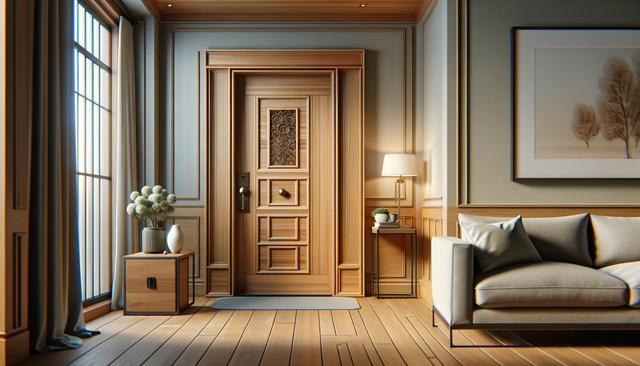Understanding the Role of Entry Doors
The entry door is more than just a functional feature; it acts as a central visual and practical element of your home’s exterior. It creates the first impression for visitors and serves as a primary barrier between your indoor space and the outside world. A thoughtfully selected front door can enhance curb appeal, elevate your property’s value, and play a key role in home security and insulation. With a growing number of designs and materials available, homeowners can now find options that align with both aesthetic preferences and performance expectations.
Today’s entry doors come in various materials, each offering distinct advantages. Common choices include wood, steel, and fiberglass. Wood doors offer a classic, traditional look and can be customized with stains and finishes, but they may require more maintenance. Steel doors provide strong security benefits and are often more affordable, though they can be prone to dents. Fiberglass doors strike a balance by mimicking the look of wood while offering superior resistance to weather and wear. Understanding the pros and cons of these materials helps homeowners make informed decisions based on their priorities.
Balancing Style and Design
When selecting an entry door, style plays a major role in complementing your home’s architectural character. Whether your home features a modern, colonial, craftsman, or rustic design, there’s a door style that can harmonize with it. Popular design elements include paneled doors, glass inserts, sidelights, and transoms, which enhance natural lighting and visual appeal.
Color and finish options are also important to consider. A bold color can make your entryway a focal point, while neutral tones may provide a timeless look. For homeowners seeking a more personalized approach, custom patterns, decorative glass, and hardware can add unique flair. Additionally, smart design choices can subtly reflect your personality and increase the visual cohesion of the entire home exterior.
- Choose glass inserts for added elegance and light
- Match hardware with existing exterior metal finishes
- Consider symmetry with sidelights and transoms
Security Considerations for Peace of Mind
Security is a top priority for any entry door. Beyond aesthetics, a well-built door should protect against forced entry and provide durable locking mechanisms. Multi-point locking systems are increasingly popular, offering enhanced resistance to break-ins compared to traditional single-point locks. Reinforced frames and strike plates can also add an extra layer of protection.
For improved security, many homeowners opt for doors with solid cores and high-gauge steel or impact-resistant fiberglass. It’s also wise to consider the quality of the door’s hinges and the placement of security features like peepholes and smart locks. When evaluating options, look for doors that meet or exceed local building codes and safety standards.
- Solid core construction for durability
- Multi-point locking mechanisms
- Smart lock compatibility
- Security-rated glass options
Energy Efficiency and Environmental Impact
Entry doors contribute significantly to a home’s energy efficiency. Poorly insulated or improperly sealed doors can lead to drafts and increased heating and cooling costs. Modern energy-efficient doors are designed with insulating cores, weatherstripping, and tight-fitting frames to reduce energy loss. Choosing a door with a high energy performance rating can make a noticeable difference in your utility bills over time.
Fiberglass and steel doors typically offer better insulation values than traditional wood doors. Some models come with energy certification labels, indicating that they meet specific energy-saving criteria. Additionally, selecting sustainable materials or doors made with recycled content can reduce your environmental footprint while maintaining high performance.
- Look for ENERGY STAR® labeled products
- Ensure proper installation and sealing
- Consider low-emissivity (Low-E) glass if the door has windows
Installation and Maintenance Tips
Proper installation is essential to maximizing the benefits of your entry door. Even the most advanced door will underperform if not installed correctly. It’s advisable to work with experienced contractors who understand how to align the frame, insulate gaps, and secure the door to prevent drafts and ensure smooth operation. Some homeowners choose pre-hung doors for easier installation, as they come with frames and hinges already attached.
Maintenance requirements vary depending on the door material. Wood doors may need regular staining or painting to protect against moisture and sun damage. Steel doors should be checked for rust, especially in humid climates, and fiberglass doors generally require minimal maintenance aside from occasional cleaning. Regardless of type, periodic inspection of seals, weatherstripping, and hinges helps keep your entryway in top condition.
- Use weather-resistant finishes for wooden doors
- Lubricate hinges and lock mechanisms annually
- Check for air leaks and reseal as needed
Conclusion: Creating a Welcoming and Secure Entry
Choosing an entry door involves careful consideration of several factors, including style, security, and efficiency. A well-chosen front door not only enhances the visual charm of your home but also contributes to safety and energy savings. Whether you’re upgrading an existing door or selecting one for a new build, understanding the range of materials, features, and design options will help you make an informed choice that aligns with your home’s needs and your personal preferences. Investing in a quality entry door is a practical step toward creating a secure, stylish, and energy-conscious living space.




Leave a Reply